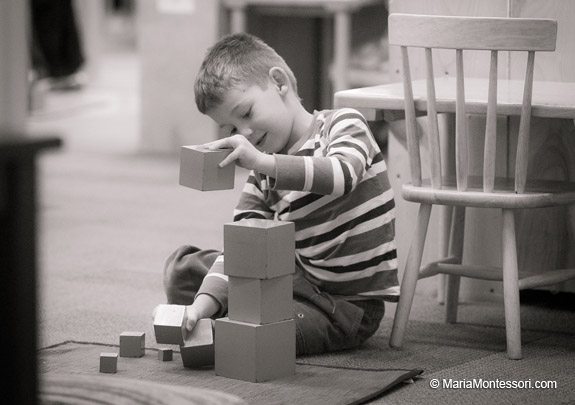October 27, 2022
Dr. Angeline Lillard, professor of Psychology at the University of Virginia, author of Montessori: The Science Behind the Genius, as well as several academic articles on Montessori, and Montessori speaker and advocate, has a new article in the American Journal of Play: Playful Learning and Montessori Education. It’s long, dense but readable, and bristling with objectivity, academic citations, and peer-reviewed research.
Because the world of public education depends on academic studies and research, the article has all kinds of implications for the expansion of Montessori Primary to many more children. It also offers a lot of theory and data for conversations with curious or skeptical non-academics. This one should be on the coffee table in the admissions office at every Montessori school out there.
I encourage readers to read and take the time to read the whole thing. Here’s the executive summary:
- Play, as opposed to didactic learning, is a big deal in the world of Early Child Education.
- Montessori has been generally considered anti-play (when it is considered at all).
- This seems strange since freely chosen, open-ended activity is what we do!
- In fact, Montessori has many of the elements identified as part of playful learning (to wit, structure, objects, interactive lessons, free choice, peer interactions, intrinsic rewards, and fun).
- What Montessori doesn’t do is pretend play, such as dress-up, toy kitchens, and fantasy.
- When you look at the research, the evidence for pretend play (as opposed to playing in general) isn’t all that strong one way or the other.
- Consequently, we don’t really know if adding pretend play to Montessori environments would help or hurt.
- But we can look to see if the other elements of “playful learning Montessori style” is helpful to children’s learning.
- This can be problematic because Montessori is practiced under a range of interpretations.
- But if we control for certain elements of “high-fidelity” Montessori, we see improved social and cognitive outcomes.
That’s a very condensed summary of a thorough and detailed article. Why is this so important?
Dr. Lillard bridges two worlds that don’t communicate much or understand each other. Montessorians often don’t get why we’re not more widely adopted, especially in the public sphere. Academics often don’t seem to ‘get’ Montessori, or find it relevant to their work. There are two reasons for this state of affairs.
One reason we have stayed on the sidelines is the play question. The academic world sees us as didactic rather than play oriented. But ‘play-based’ is the gold standard in early childhood education. The article lays that perception on the table and takes it apart point by point. It gives Montessorians a way to talk about, and answer, the kinds of questions outsiders will ask. Consider handing this to the smart and skeptical parent who wants to know “what the research says.” It also opens the question of pretend play on both ends, challenging Montessorians to consider our biases, and asking the academy to put up some solid research on why it belongs in schools in the first place.
(Recently D. Lillard has taken on exactly that question. She has an article questioning the research supporting pretend play, followed by a fascinating exchange of comments, in the Psychological Bulletin 2013, 139/1)
More generally, the world of public policy, where funding and curriculum decisions for schools, Head Start, and early childhood education programs are made, depends on peer-reviewed, quantifiable, replicable research. Until recently, there hasn’t been a lot of this. That’s because of selection bias (it’s hard to get a control group of families who would have chosen Montessori but couldn’t) and because the topic has seemed so nebulous—how can researchers know what they’re measuring when they measure Montessori? What Lillard does here is outlining a research framework—defining Montessori, translating our practices into technical, researchable topics, and laying out enticing possibilities for further work.
Dr. Lillard told me that she wrote this paper primarily for an academic audience. But it carries a challenge for Montessorians as well. There are legitimate issues around measurement and testing, to be sure, but in the end, it doesn’t matter. That is the language they speak where the decisions are made, and if we want to bring our voice to the conversation, we would do well to learn to speak it as well. And if we can tell our story in a language they can understand, we will get our story out to many more children and adults. If not, we will remain a mostly exclusive niche.
